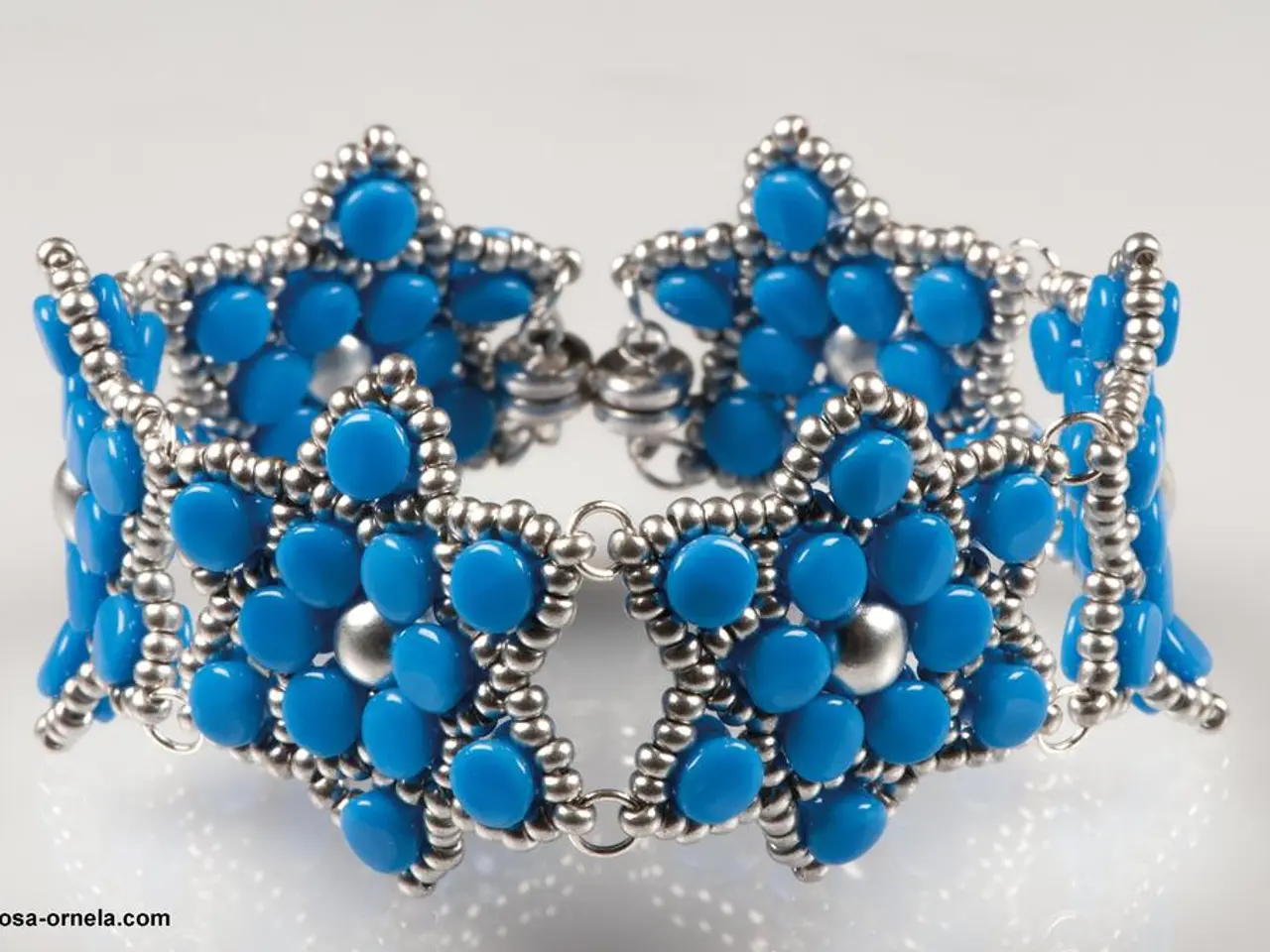Guide to Birthstones: Aquamarine for Individuals Born in March Month
Aquamarine, the enchanting gemstone known for its captivating blue-green hue, has a rich and intriguing history that spans several millennia. The name "aquamarine," derived from the Latin 'aqua marinus,' meaning 'water of the sea,' perfectly encapsulates its characteristic color and maritime associations.
The ancient Egyptians were among the first to appreciate aquamarine, fashioning it into amulets for protection against evil spirits. Its symbolic connection to the sea was also evident among the ancient Greeks and Romans, who believed it protected sailors at sea, ensuring safe passage and warding off ocean dangers.
Aquamarine has long been associated with a variety of mystical and healing properties. Traditionally, it was believed to guard mariners against the perils of the ocean, increase intelligence, courage, happiness, wisdom, and youthfulness. It has been regarded as a stone of friendship, faithfulness, and courage, and is said to reawaken love in married couples and render warriors untouchable in battle. In folklore, it was also thought to bring victory in battles and legal disputes.
The stone was reputed to support health as well—believed to help with glandular disorders, fluid retention, and maintaining eye health. The Romans further believed aquamarine possessed healing properties, especially due to its near-invisibility when submerged in water, symbolizing purity and protective qualities. Today, it remains popular in metaphysical circles for promoting calm, clarity, and emotional healing.
Aquamarine is found in several regions worldwide, primarily in granite pegmatites and mineralized veins of metamorphic rocks. Brazil is the most significant source, with the state of Minas Gerais producing some of the world’s finest specimens, including the famous Dom Pedro aquamarine, one of the largest ever cut. Other notable deposits are found in Pakistan, China, Myanmar, Russia, Ukraine, Mozambique, Kenya, Madagascar, Zambia, Nigeria, Zimbabwe, and the United States (notably Colorado’s Mount Antero region and southern California).
In 1991, Jürgen Henn from Idar-Oberstein, Germany, visited the owner of a large aquamarine crystal in Brazil, leading to the acquisition of the Dom Pedro aquamarine. The original Dom Pedro was a metre-long before it fractured into three separate pieces. In 1992, the Dom Pedro was brought to Germany by Tom Munsteiner and Axel Henn, under the request of Bernd Munsteiner. Bernd Munsteiner spent a year studying, cutting, faceting, and polishing the Dom Pedro before transforming it into an obelisk, weighing 26 kg (57 lbs).
The Dom Pedro made its public debut in 1993 in Basel, Switzerland, before being housed in the National Gem Collection Gallery of the Smithsonian National Museum of History in Washington DC, USA. The Dom Pedro was destined to be cut into many smaller stones, but was rescued by Jane Mitchell and donated to the Smithsonian National Museum of History. Today, it stands as a testament to the beauty and historical significance of aquamarine.
In legends, aquamarine is described as the mermaid's stone, bringing luck to sailors and protecting them from ocean perils. It is the March birthstone and can be mined not only in Africa and Brazil but also in other countries such as Australia, China, Myanmar, Pakistan, Madagascar, Russia, USA, and Sri Lanka. The Dom Pedro is now in the permanent collection of the Smithsonian National Museum of History, a fitting tribute to this captivating gemstone's storied past.
- Given the historical connections, it's no surprise that aquamarine today features prominently in jewelry designs, symbolizing friendship, courage, and a touch of the sea's tranquility—making it an ideal choice for fashion-and-beauty enthusiasts seeking to express their lifestyle.
- For those pursuing gemmology as a career or hobby, understanding the unique science behind aquamarine and its characteristics can be an enlightening journey, as one learns about its formation, testing methods, and the various membership groups devoted to sharing knowledge within the field.
- In addition to jewelry, aquamarine's captivating beauty is showcased in the form of publications and workshops, offering valuable insights for scholars, collectors, and enthusiasts alike, such as compilations of aquamarine research, articles, and techniques for cutting, cleaning, and preserving gemstones.
- Home-and-garden decorators may also consider incorporating aquamarine, with its calming hue and symbolic associations, into various design elements like vases, sculptures, and furniture, contributing to a serene and enchanting environment.
- The allure of aquamarine transcends time and culture, as this fascinating gemstone continues to inspire artistry, provoke wonder, andcapture our imagination through its diverse applications, from maritime talismans and mystical amulets to cutting-edge science and contemporary fashion statements.




